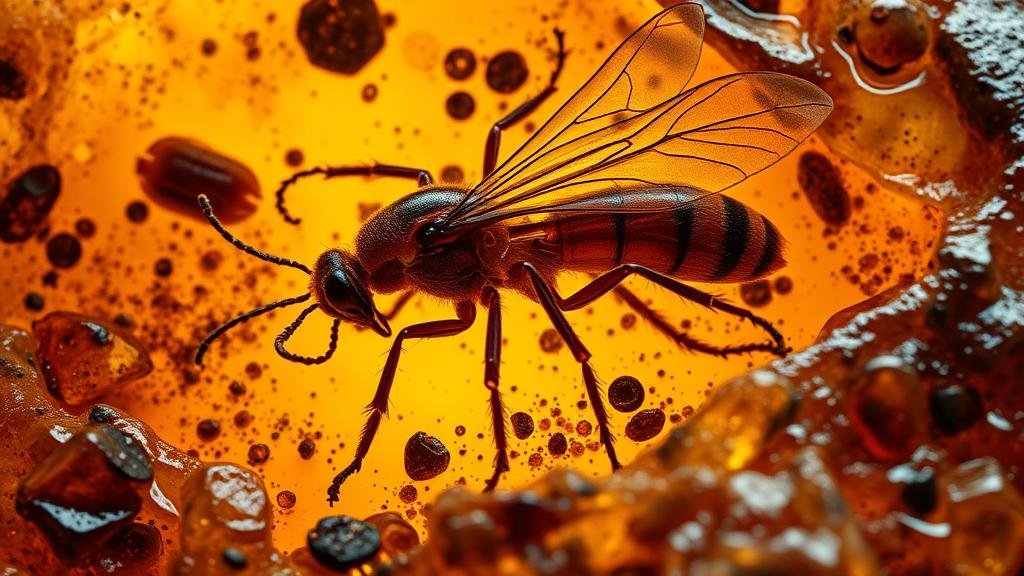Uncovering amber fossils in Baltic coastal regions, revealing preserved prehistoric insects.
Uncovering Amber Fossils in Baltic Coastal Regions
Amber, often referred to as natures time capsule, is a fascinating substance formed from fossilized tree resin. The Baltic coastal regions, particularly along the shores of the Baltic Sea, are renowned for their rich deposits of amber, which have yielded an impressive array of preserved prehistoric insects and other organic material. This article aims to provide a detailed overview of amber fossil discovery for rockhounds and mineral collectors. We will explore the formation of amber, the significance of the Baltic deposits, and practical tips for collectors.
The Formation of Amber
Amber is formed from the fossilized resin of ancient trees, primarily those from the conifer family. This process typically spans millions of years. Upon secretion, the resin accumulates in the environment and undergoes polymerization – a chemical reaction where small molecules bond to form larger, complex structures. Over time, the resin hardens and becomes buried beneath soil and sediment layers. The conditions under which amber forms are crucial, as they impact the quality and clarity of the resulting fossil.
Significance of the Baltic Region
The Baltic region is home to one of the largest amber deposits in the world, with the majority located in Poland, Lithuania, Latvia, and Russia. It is estimated that around 90% of the worlds amber is sourced from this area, making it a hotspot for both scientific research and amateur collection. Geological studies indicate that the primary resin-producing trees were ancient relatives of modern conifers, such as pines, which thrived during the Eocene epoch, approximately 56 to 34 million years ago.
- The Baltic amber deposits extend over 10,000 square kilometers.
- Fossils found in amber can range from insects and spiders to plant materials.
- Each piece can contain multiple specimens, providing valuable ecological insights.
Prehistoric Insects Preserved in Amber
One of the most enticing aspects of amber is its ability to preserve prehistoric life in exceptional detail. Fossils encased in amber can include a vast spectrum of organisms, primarily insects. Notably, researchers have discovered species that are either extinct or have remained unchanged for millions of years. For example:
- Ants: Some of the most well-preserved specimens include various ant species from the Miocene era, offering insights into social behaviors of ancient colonies.
- Beetles: Fossilized beetles, including the extinct genus Protocoleopteron, provide information on the evolutionary history of these resilient insects.
The exceptional clarity of Baltic amber often allows for detailed studies of the morphology and anatomy of these specimens, revealing color patterns and anatomical features that would be lost in other fossilization processes.
Practical Tips for Collectors
For rockhounds and mineral collectors interested in sourcing amber fossils, a few guiding principles can enhance your experience:
- Research Locations: The best places to find amber are near the shoreline, particularly after storms that may wash amber onto the beach. The towns of Palanga (Lithuania) and Jūrmala (Latvia) are notable for their accessibility.
- Use the Right Tools: Equip yourself with tools like nets, hand trowels, and magnifying glasses to help identify and excavate your finds without damaging them.
- Know Local Regulations: Ensure that youre familiar with the local laws regarding fossil collection, as regulations can vary by country and region.
Conclusion and Actionable Takeaways
Amber fossils serve as invaluable resources for understanding prehistoric ecosystems and the evolutionary history of life on Earth. For collectors, the Baltic region offers a unique opportunity to uncover specimens that carry stories from millions of years ago. By employing proper research, tools, and adherence to regulations, rockhounds can pursue their passion for collecting amber fossils effectively.
In summary, whether youre a seasoned collector or a newcomer to the world of fossils, exploring the beautiful Baltic coastal regions can lead to exciting discoveries and a deeper appreciation for the natural history embedded in amber.



